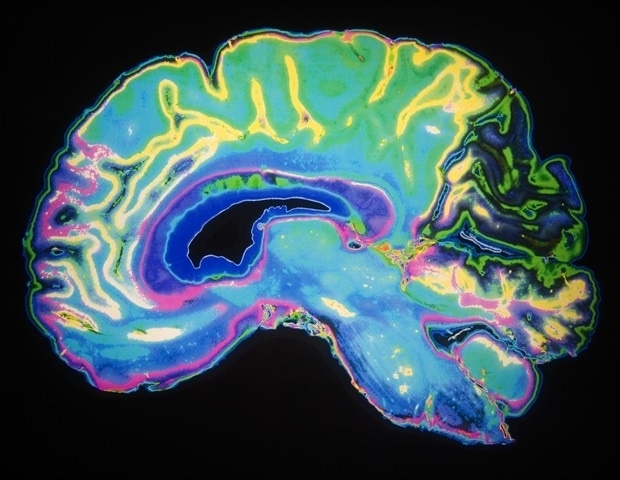[ad_1]

New research from the Institute of Psychiatry, Psychology & Neuroscience (IoPPN) at King’s College London provides valuable insights into the brain-body immune connection identifying key communication hubs in the dural sinuses and skull bone marrow at the back of the head.
The research, which was supported by funding from the National Institute for Health and Care Research (NIHR) Maudsley Biomedical Research Centre (BRC) and published in the journal Brain, used neuroimaging techniques to establish that the dural sinuses, a region at the back of the head that drains deoxygenated blood from the brain, as well as the skull bone marrow act as a likely interface between the central and peripheral immune systems.
While the central immune system protects the brain from infection and disease, the peripheral immune system monitors and responds to threats to the rest of the body. Traditionally thought to function independently due to the protective blood-brain barrier, this study highlights a potential link between the two systems, suggesting they could influence one another via other mechanisms.
Previous research has observed significant elevations in inflammatory markers in both the brain and the body in depression, but no direct correlation has been established.
Researchers analysed a dataset of 51 adults with depression, as well as 25 healthy age matched participants that were originally recruited as part of the BIODEP study to investigate the role of inflammatory processes in depression. Each subject provided a blood sample before undergoing a PET scan and MRI during the original data collection. Peripheral inflammatory markers were assessed from blood while inflammatory activity in the anterior cingulate cortex, skull marrow, and dural sinuses was assessed with PET sensitive to immune cell density.
An analysis of the data revealed that the inflammatory activity in dural sinuses and skull marrow, which the researchers identified as a potential reservoir of immune cells, is closely associated with inflammatory activity in both the body and the brain, and this association was present in those with depression and in healthy controls. This association was stronger in the dural sinuses than in the skull marrow.
Despite extensive research into the central and peripheral immune systems, the skull has always been overlooked as a location of interest in scanning research and discarded as unimportant.
Excitingly, our study has established that the interface between skull and brain may be the missing link that we have been looking for – an intermediary between two sets of signals that until now were not clearly correlated.”
Dr. Julia Schubert, research associate at King’s IoPPN and study’s senior author
Researchers now want to explore this in greater detail with other conditions to better understand the nature of this relationship.
Brandi Eiff, the study’s first author from King’s IoPPN said, “There are many conditions for which inflammation is a factor. By establishing this link, we can better understand how peripheral immunity interacts with brain function and mental health. As science and medicine begins to move toward a more holistic approach, considering the immune responses across the brain and body could be valuable in terms of advancing treatments of many disorders, including depression.”
Co-author Valeria Mondelli, Clinical Professor of Psychoneuroimmunology at King’s IoPPN and Co-lead of Psychosis and Mood Disorders Theme at the NIHR Maudsley BRC said: “Our study finds that although peripheral and brain inflammation do not seem to be directly associated, there are areas of our skull which appear to work as “traffic lights” between the two. Focusing on examining levels of inflammation in these areas could give us more precise information of what is happening in the brain and, in the case of depression, identifying those patients in need of treatment that reduces inflammation. Furthermore, these areas could be specifically targeted by future treatment to reduce the effect of increased inflammation in the brain for depression and other immune-related conditions.”
Source:
Journal reference:
Eiff, B., et al. (2024) Extra-axial inflammatory signal and its relation to peripheral and central immunity in depression. Brain. doi.org/10.1093/brain/awae343.
[ad_2]
Source link



